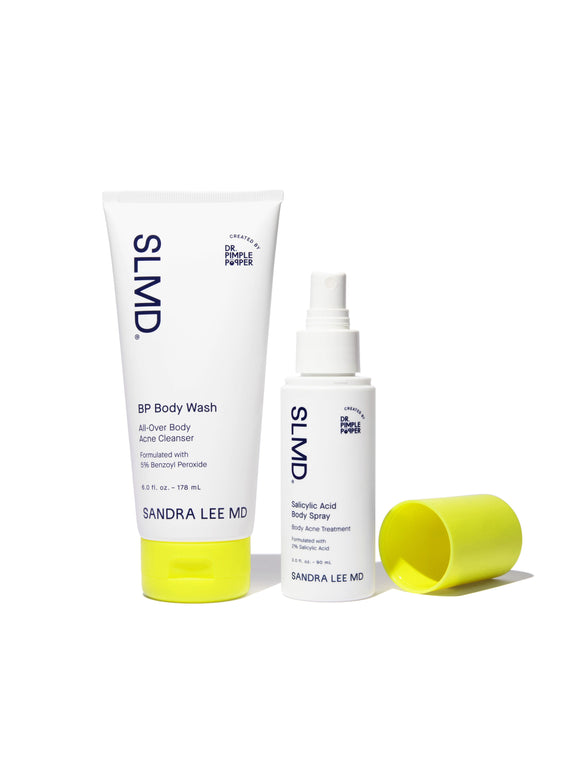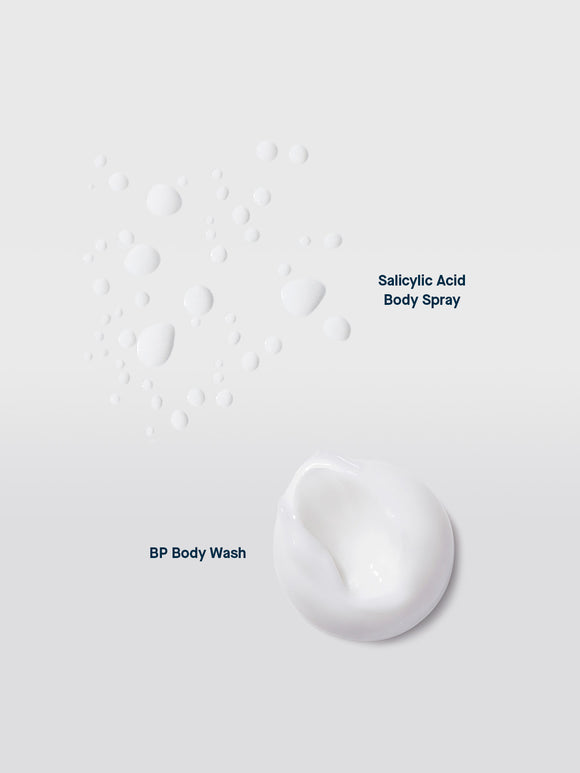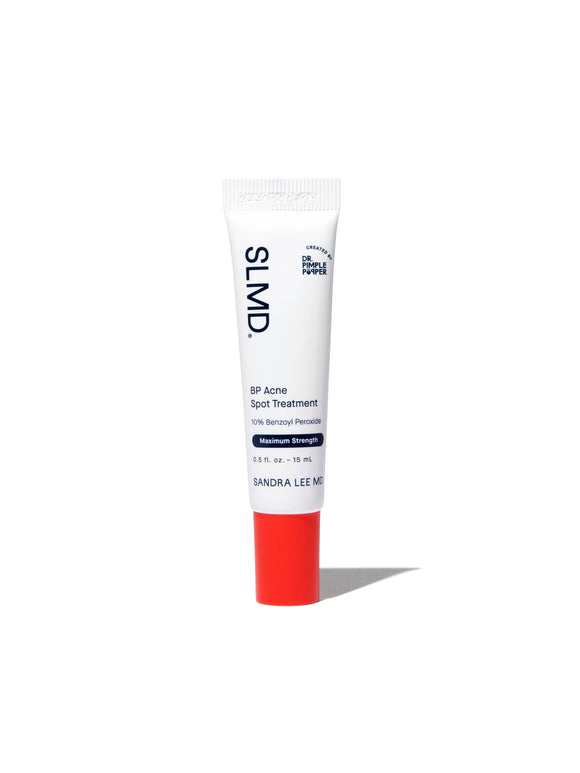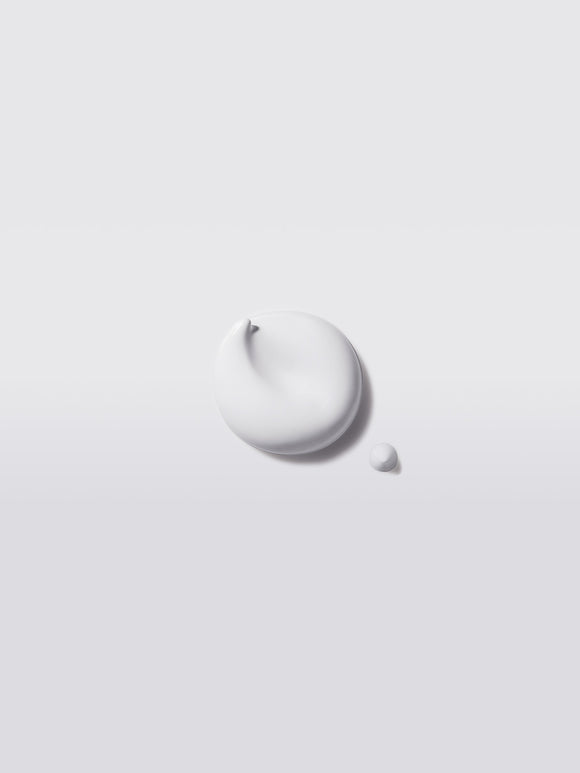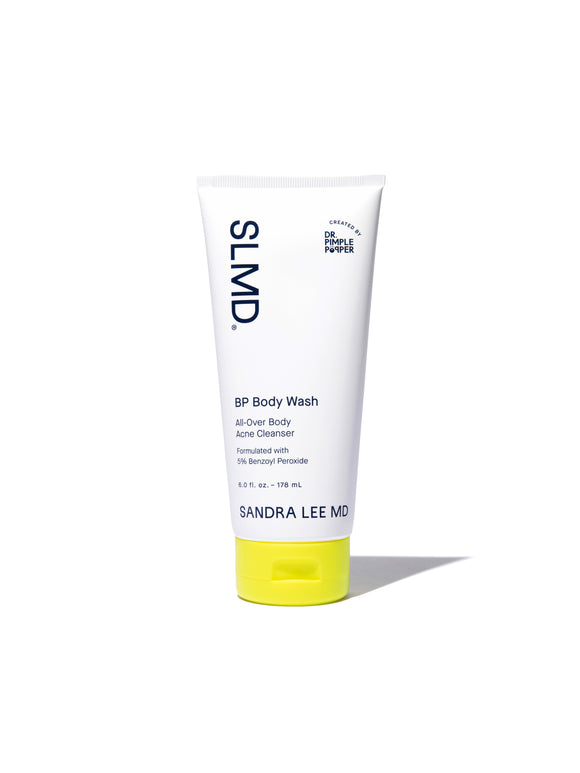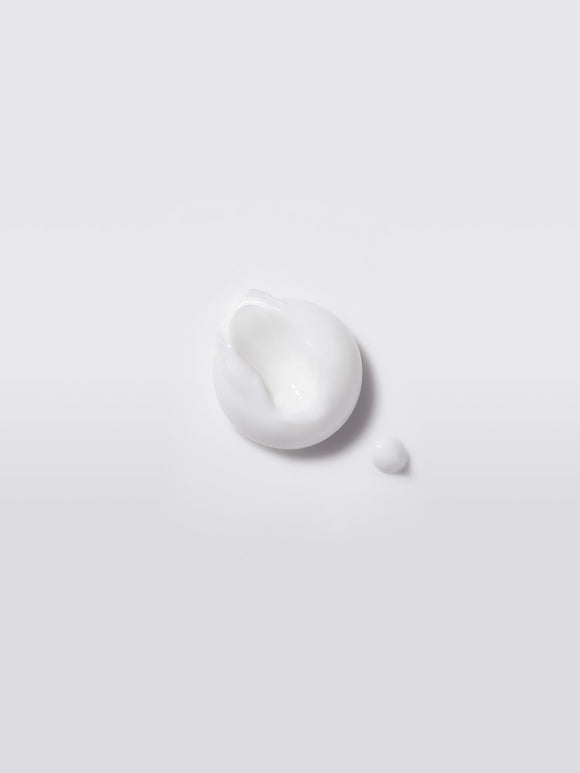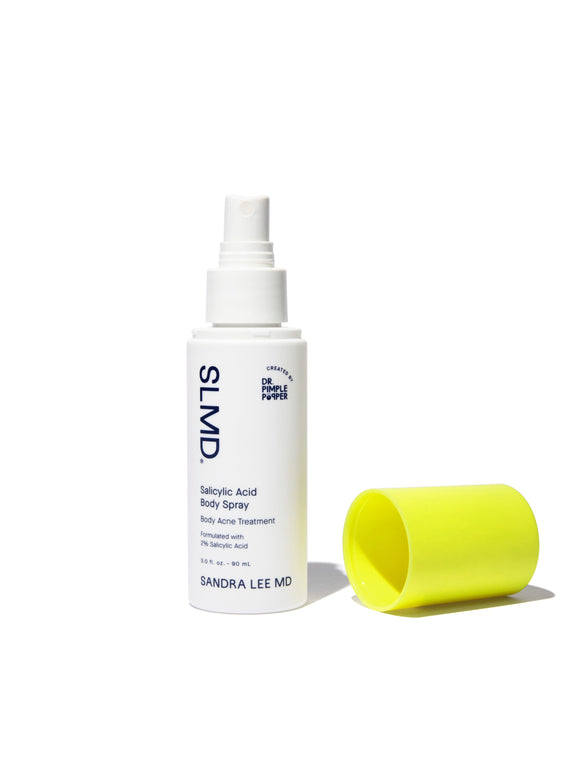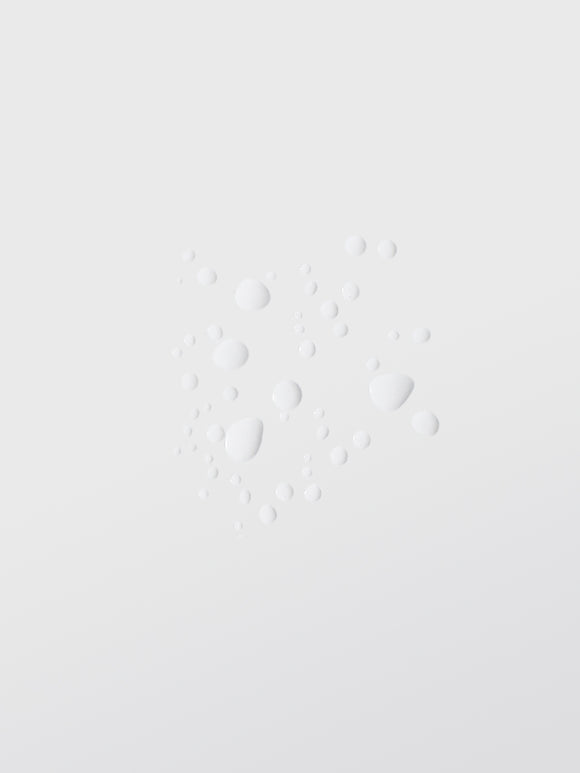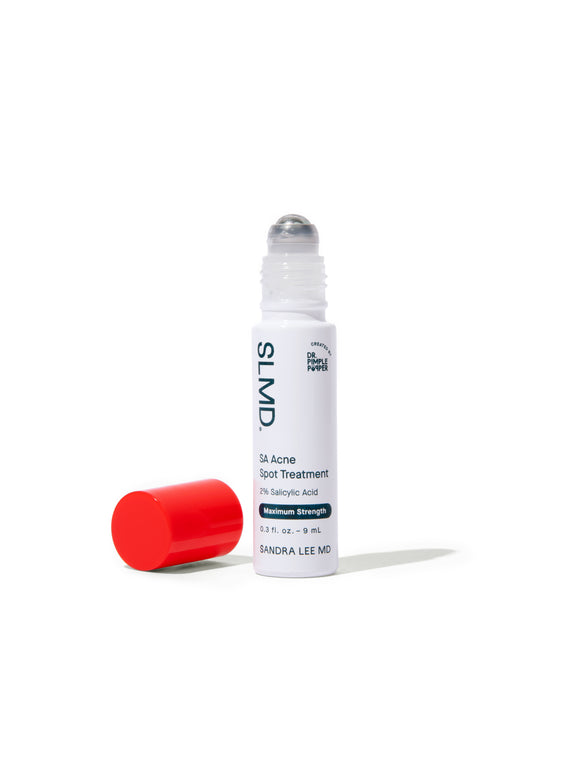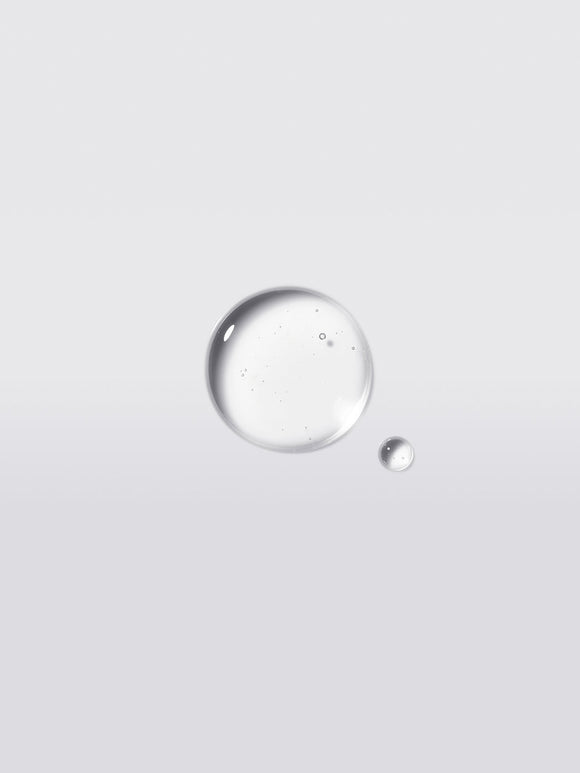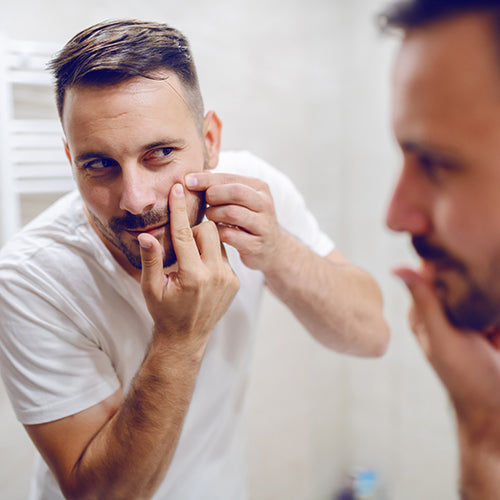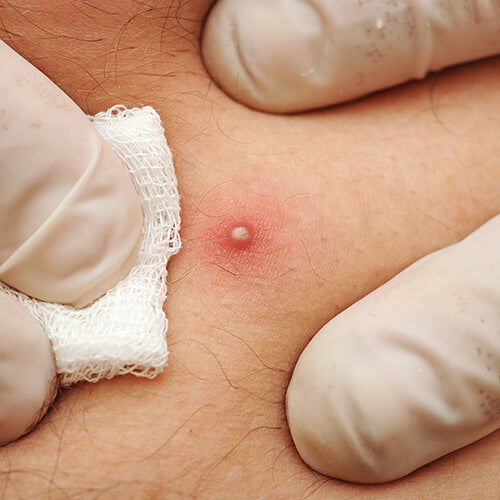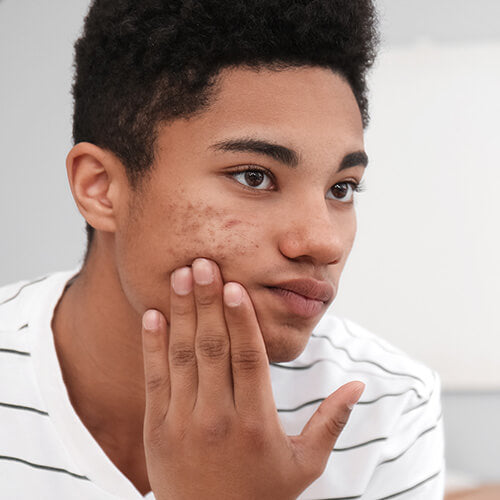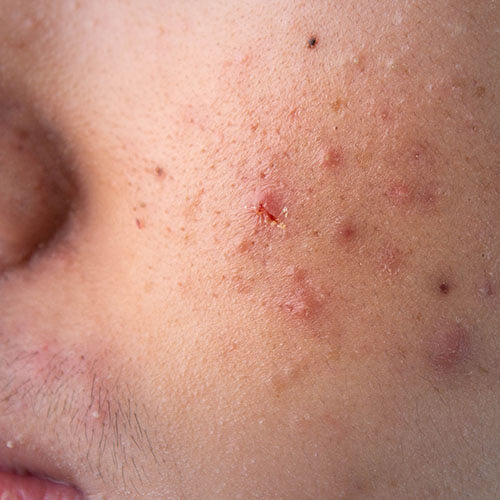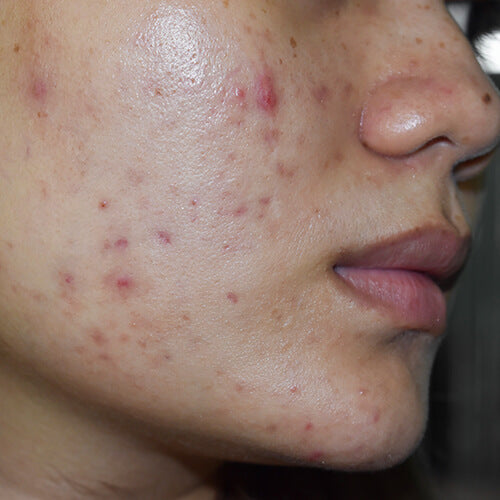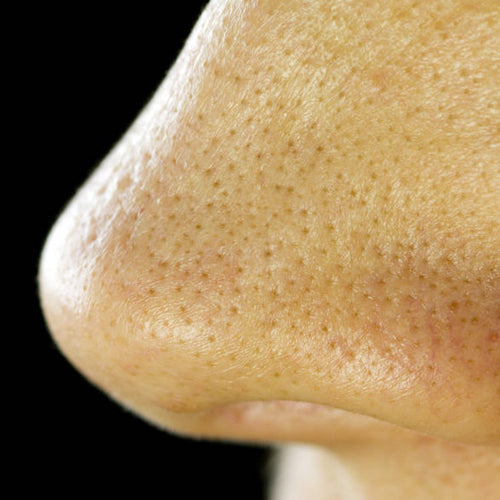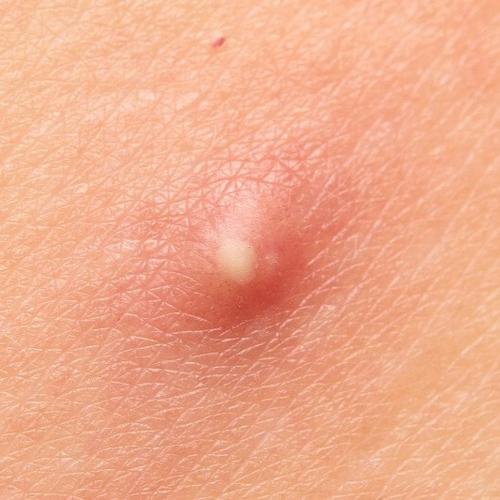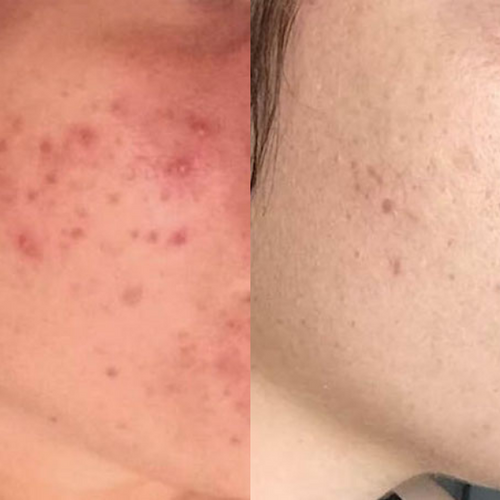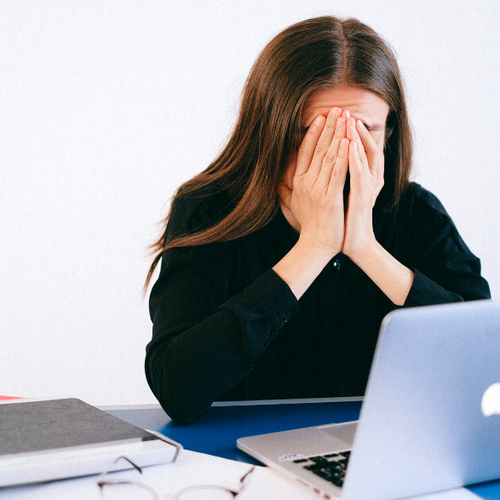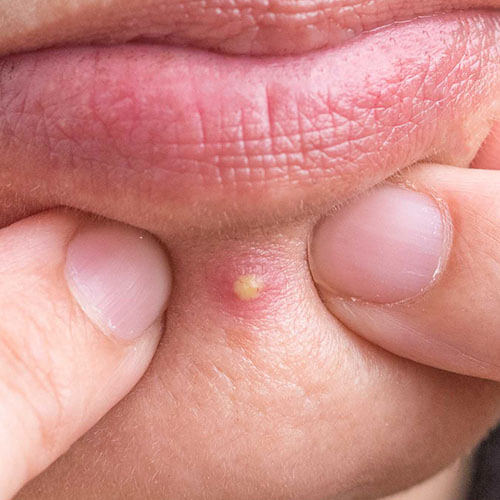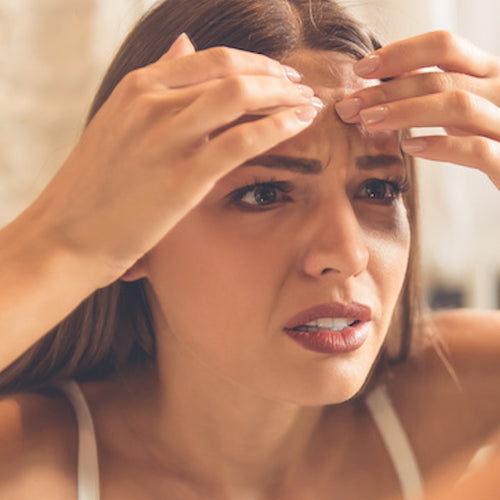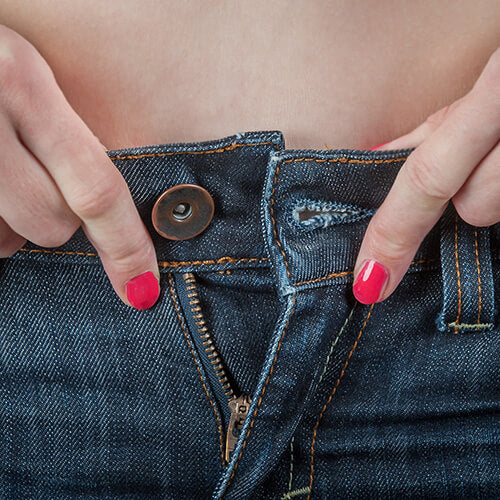
How to Deal with Acne...Down There
Dr. Pimple Popper's here to answer all your questions about this *delicate* subject.Published:
4 minute read
Sometimes pimples show up in the strangest places — like your scalp, or ears, even….down there. Body acne doesn’t discriminate: wherever you’ve got sebaceous glands, you’ve got a potential for pimples.
But how can you tell when a pimple on or near your private parts is just a simple acne breakout — or a sign of something else? And what’s the best way to treat it, fast? Our founder, dermatologist Sandra Lee, MD (aka Dr. Pimple Popper) is answering all your questions.
Article Quick Links
Is acne in your "private parts" a thing?
While we tend to associate acne with the face, it’s super common in other areas of the body too. Though breakouts most frequently occur on the chest and back (where there’s a lot of oil glands), body acne can also pop up in more intimate zones like:
- Thighs
- Buttocks (aka buttne)
- Bikini line/groin
- Genital area (aka vacne)
What causes vaginal acne?
Also known as vacne, “vaginal” acne typically refers to a breakout in the outer genital area — more accurately described as the vulva. Just like other types of body acne, pimples in more intimate areas happen when C. acnes bacteria invade clogged pores, provoking an immune response.
We’ve talked before about what contributes to body acne — like stress and hormonal fluctuations. There are also specific factors that influence breakouts in your intimate zone:
- Friction
- Tight clothing
- Perspiration (or other body fluids)
- Synthetic fragrance (personal care products, detergents)
- Improper hygiene
Vaginal acne vs. other bumps “down there”
So how can you tell if that bump is a pimple, or it’s something else? According to Dr. Lee, lookalike dermatological conditions in the genital area include:
- Ingrown hairs: hair trapped under the skin that causes inflammation. Typically small, red bumps with a hair visible at the center. Usually caused by shaving or waxing and can often be prevented by using proper hair removal techniques. Try exfoliating with SLMD AHA/BHA Swipes before shaving.
- Folliculitis: an infection or inflammation of the hair follicles. It appears as small red or white bumps that may be itchy or sore. Caused by bacteria, fungi, or viruses. It commonly occurs after shaving, wearing tight clothing, or using hot tubs or pools.
- Acne inversa (hidradenitis suppurativa): A chronic, inflammatory condition that affects areas with numerous sweat glands, like the groin and armpits. Causes painful, deep nodules, abscesses, and sinus tracts. Caused by a dysfunction of the hair follicles and apocrine sweat glands.
How to treat vaginal acne
If you’re dealing with a random pimple or two in your genital area, it's no cause for concern: it's perfectly normal, and should heal on its own. If the bump is on/in your actual privates, Dr. Lee advises not to use any products on it, as the skin and environment are sensitive. For pimples that pop up along the bikini line, inner thighs, or between the buttocks, treat them as you would a breakout anywhere else:
- Don’t pick: squeezing or popping pimples can make them worse and lead to infection.
- Spot treat: dab on a targeted treatment with acne-fighting ingredients like salicylic acid or benzoyl peroxide — just be sure to steer clear of the delicate area in or around your vagina.
Try: SLMD Salicylic Acid Spot Treatment, BP Acne Spot Treatment
For more chronic cases of acne around the groin area, try a body acne wash, spray, or lotion, again avoiding the most sensitive skin.
Tips to prevent intimate area acne
- Practice good hygiene. Cleanse regularly using a mild, non-comedogenic cleanser. Avoid harsh soaps or scrubbing vigorously, which can irritate skin and worsen acne.
- Wear breathable clothing. Opt for loose-fitting clothes made from breathable fabrics like cotton. This helps reduce friction and allows air circulation, minimizing sweat buildup that can contribute to acne.
- Shower after exercise: Perspiration can mix with oils and bacteria, leading to clogged pores. Showering after exercising or any activity that causes sweating helps cleanse the skin and prevent acne breakouts.
If you can’t change clothes or shower immediately after working out, spritz your body and clothing with SLMD Salicylic Acid Body Spray — just avoid spraying directly on your privates.
When to see a dermatologist for your genital acne
If you’ve tried over-the-counter body acne solutions and you’re not getting results, it’s time to call your dermatologist. You may need a prescription topical or oral medication, like retinoids or antibiotics.
Another good reason to have persistent body bumps checked by a doctor is to rule out other causes, like those we mentioned above. Check what other culprits that can create pimples-like lesions here.

Dr. Lee's Last Word
Acne can happen just about anywhere on your body — and I do mean anywhere. If you’re dealing with pimples in your private areas, it’s really important to use a body wash with benzoyl peroxide and to wear clothing that’s breathable. If it seems to be getting worse, or you think it might not be acne, talk to your dermatologist.





